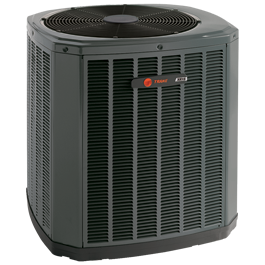Aluminum Condensing Coils Vs. Copper Condensing Coils: Advise From Phoenix AC Installation Pros
For the Phoenix AC installation industry, the debate concerning aluminum condensing coils versus copper condensing coils could be termed “economic focused.” For the Mesa homeowner, the Scottsdale business owner or any other buyer in need of new air conditioning equipment, the debate hinges on how to get the best quality for the least expenditure.
A Note of Qualification For Arizona Air Conditioning Contractors
If you are a Phoenix air conditioning service center, don’t let the “economics” comment ruffle your feathers. This article comes in via the viewpoint of a buyer. Industry arguments about copper versus aluminum involve many aspects of technology. From the viewpoint of an Arizona AC contractor, economics is only one component of the debate. However, from the viewpoint of the buyer, all contractors have a primarily sales-orientated end goal.
Buyers expect heating and cooling installation and repair dealers to hedge the details. It’s a mindset that comes about due to the competition in the HVAC industry. The pricing, the product favoritism and the value-added sales incentives merely reflect the mindset of new and used car dealers.
Dedicated To Meet The Needs of Inquiring Valley Metro Homeowners
This article is for the benefit of homeowners and business owners throughout the greater Phoenix, Arizona metropolitan area. As such, the text presents both sides of the argument: Which works best, air conditioning with aluminum condensing coils or air conditioning with copper condensing coils.
Even the information presented via governmental and educational resources tend to be tinted by manufacturer economics. Everyone wants to claim the better heating and cooling solution. It’s just a matter of how to gain marketing share.
Here at American Cooling and Heating we carry all major brands of heating and cooling equipment, including Amana, Carrier and Trane. We handle units that are crafted with copper condensing coils and units manufactured with aluminum condensing coils. Economics may indeed be our purpose for being in business. Without profit, we would fade away.
However, AC&H strives to meet any customer need or demand. Perhaps the following information will help simplify your choice.
Aluminum Condenser Coils – The Beginning
It began in the 1970s when General Electric was still in the HVAC business. All other AC manufacturers provided condensing units with aluminum fins bonded to copper tube. GE wanted to reduce production expenses. This brought about the introduction of coils with aluminum tube and aluminum fins.
For the most part, this was an industrial solution. Prior to 1980, only around 20% of residential structures had installed air conditioning. AC unit components and AC installation expenses rendered air conditioning as a luxury item. Very few homeowners could afford central heating and cooling.
Then the market shifted. Construction boomed. Inflation invaded. Home values increased and the market for home air conditioning bloomed into a lucrative enterprise.
The use of aluminum coils provided GE with a competitive edge. In no long time, other AC manufacturers began to produce their own version of compatible aluminum coil solutions. GE no longer competes in the HVAC business, but the aluminum tube with aluminum fin condensing coil remains a stable market product.
Drawbacks of Using Aluminum AC Coils
The arguments in this matter fall on both sides of the street. Some of the reasoning can be demonstrated scientifically. Some of the reasoning is merely personal dealer favoritism. From a scientific viewpoint, the following statements are true – providing that all tubing measurements are identical between the components:
- Copper is superior in strength to aluminum
- Copper is more reliable than aluminum
- Copper is more durable than aluminum
- Copper is easier to maintain than aluminum
- Copper provides better heat transfer characteristics than aluminum
- Aluminum coils damage easier than copper coils
- Aluminum coils are more difficult to clean than copper coils.
However, due to the expense of manufacture and an effort to keep up with the reduced unit pricing associated with units that use aluminum tube coils, the manufacturers of copper-based coil systems have resorted to downsizing the thickness of the copper tubing wall. Thus strength, reliability and durability are relative to the actual components used during the air conditioning construction stage.
Field Maintenance is also often listed as another drawback associated with aluminum tube condensing coils. Some Phoenix AC repair companies complain that leaks in aluminum tubes are more difficult to fix than leaks in copper tubes. The argument contends that aluminum coils cannot be repaired in the field. To the homeowner, this means more downtime. To the AC service center, this means additional expenses when dealing with warranty issues.
Unfortunately, the DOE does not provide statistics pertaining to leaky air conditioning coils – aluminum or copper. The rule is simple: If your unit is low on refrigerant, have trained AC technicians repair the leak, test the repair and then recharge the unit to manufacturer recommendations.
Galvanic Action describes leaks that occur when oxygen reaches the condensing coil at the point where the aluminum meets the copper in the condensing unit. The problem is often considered not repairable. Qualifier: More and more AC repair centers now carry welding rigs capable of welding aluminum. Over the years, the aluminum coil repair process has improved and will likely continue to improve in the future.
Drawbacks of Using Copper AC Condensing Coils
In the earlier years of aluminum condensing coils, Arizona AC contractors tended to favor copper tube with fin coils. However, a change over may be taking place. No matter what other arguments are in place, unit cost remains a primary factor in any AC purchase decision. For example:
- Aluminum coils cost less to manufacture than copper coils
- Due to pliability, copper coils require more material than aluminum coils (even as much as three times the material); this results in higher manufacturing expenses
- Galvanic corrosion is common problem with all copper tubing
- To remain price competitive, new units are shipping with substandard quality coils
- The thinner the copper, the more difficult it is to repair the coil.
Copper is harder to damage than aluminum, provides better heat transfer and is easier to clean. Modern engineering eliminates the majority of galvanic corrosion. The prices of the units continue to remain considerably higher than AC equipment constructed with aluminum condensing coils. Homeowners question the value of the exchange.
Conclusion
Without collected statistics, fears of leakage and early system failure are difficult to substantiate. All-aluminum coils are more fragile than copper tube coils but manufacturers take care of this issue by protecting the units inside a heavy-duty cabinet. This, of course, results in a system that is harder to clean and maintain.
When area consumers call for AC services and semi-annual system tune-ups, they get often get ripped by vendors who provide a less than necessary clean and inspection process. Most Phoenix AC installation and repair centers do not properly clean the coils.
American Cooling and Heating goes the extra mile. Our Full System AC Maintenance Service includes opening the case, applying special cleaning fluids to the coils and many other value-added AC tune-up functions. If your system is leaking, contact us today. If you need to install new air conditioning in your home, we service Mesa, Gilbert, Scottsdale and most all other Phoenix area homes and businesses.





